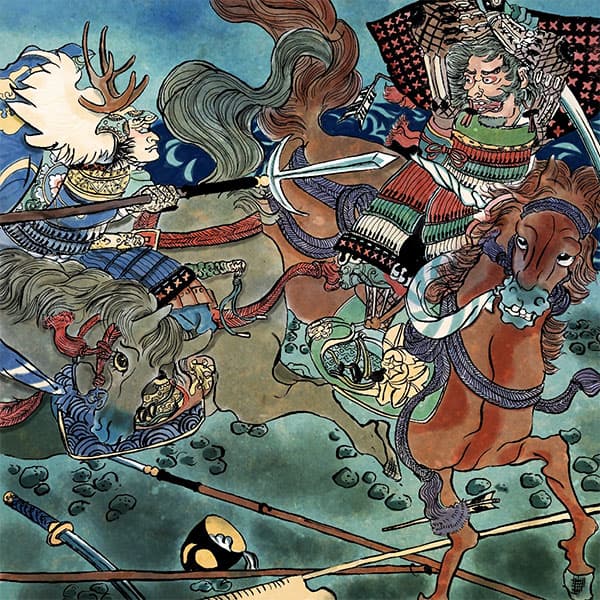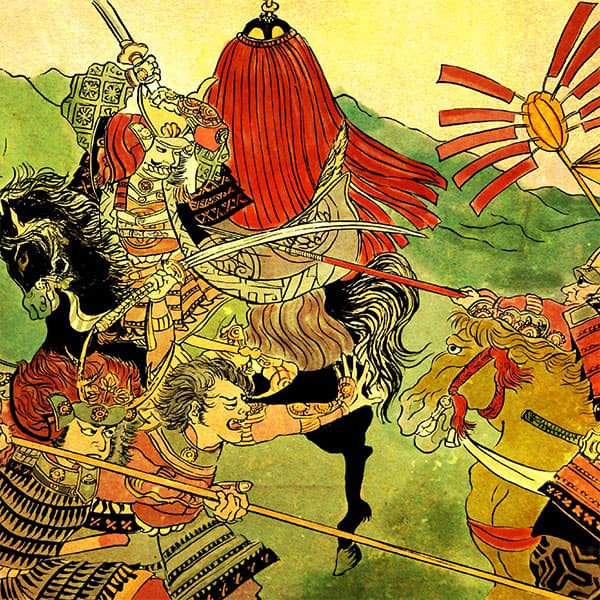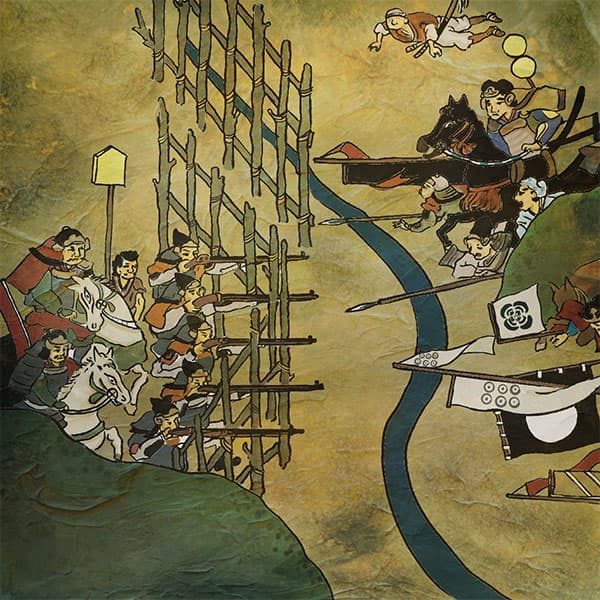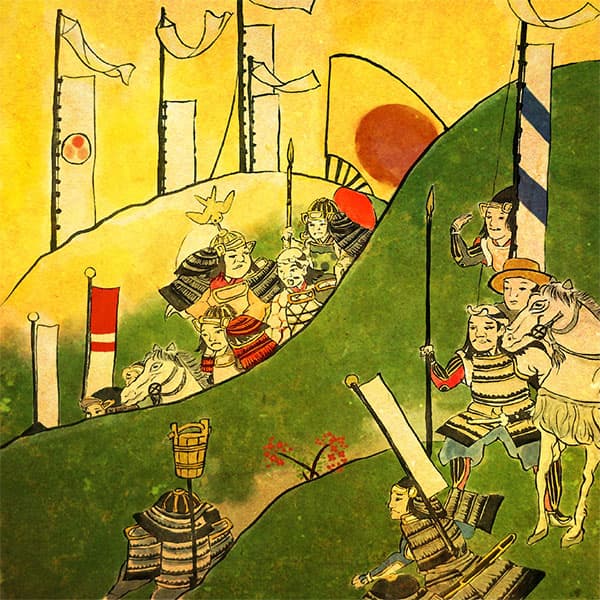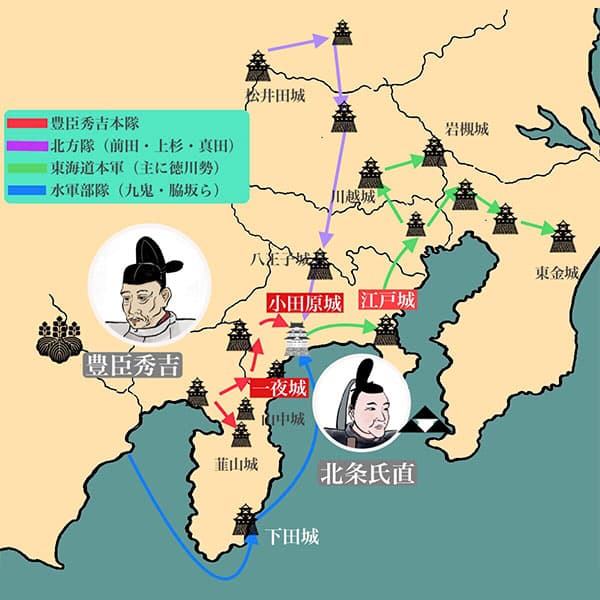Yasumasa Sakakibara (2/2)The end of the Tokugawa Four Heavenly Kings
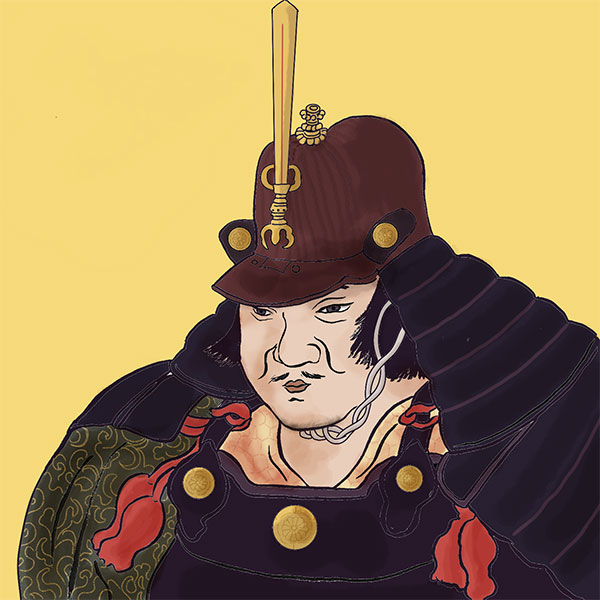
Yasumasa Sakakibara
- Article category
- biography
- name
- Yasumasa Sakakibara (1548-1606)
- place of birth
- Aichi prefecture
- Related castles

Okazaki Castle
- related incident
At this time, Yasumasa Sakakibara was working in political affairs at Fushimi Castle. Yasumasa was asked to mediate because he had received a concubine (Hanabusa-dono, later Shuko-in) from the Hanabusa family, a vassal of the Ukita family. Together with Yoshitsugu Otani, the lord of Tsuruga Castle in Echizen Province, Yasumasa served as a mediator for the Ukita family. However, the discussion drags on. Yasumasa stayed behind even after his term of stay in Fushimi had ended, and continued to mediate, and as a result, his work in the Kanto region became stagnant. This led to Yasumasa being reprimanded by Tokugawa Ieyasu and forced to return to the state. Alternatively, Tokugawa Ieyasu may have been considering the political situation after the death of Toyotomi Hideyoshi, and he may have distanced himself from Yasumasa Sakakibara, the mediator, in order to weaken the power of Hideie Ukita, one of the Five Elders.
As a result, Tatsuyasu Togawa, Sadatsuna Oka, Akira Ukita (Naomori Sakazaki), Masashige Hanabusa, and Motohide Hanabusa (Motoyuki), who had served the Ukita family for a long time, left to serve the Tokugawa family. Later, Tokinao, Hanabusa's son, was adopted by Yasumasa Sakakibara.
Sekigahara struggled
In 1599, Tokugawa Ieyasu and Ishida Mitsunari fought. Ishida Mitsunari plans to attack Ieyasu at Fushimi Castle. Yasumasa Sakakibara, who learned of this movement as soon as possible, announced that he would buy supplies from Kyoto, Fushimi, and Yodo in order to show that the number of reinforcements from the Kanto region was as large as possible. The Ishida family was kept in check by making it appear as if the group was moving.
In 1600, Ishida Mitsunari raised an army in Osaka. Ieyasu of the Tokugawa clan marched from Tokaido, and his son Hidetada from Nakasendo, aiming for Osaka. Yasumasa Sakakibara joins the Tokugawa Hidetada army as a military inspector (a supervisor dispatched by Tokugawa Ieyasu) as it advances along the Nakasendo. However, when they reached Ueda in Shinano Province (present-day Ueda City, Nagano Prefecture), they were blocked by the Sanada family. Yasumasa Sakakibara advised Hidetada to ignore the Sanada family and move on, but this was not accepted. Hidetada's army was stuck in Ueda for several days. Tokugawa Ieyasu ordered Hidetada to march, but he encountered heavy rain and was unable to arrive in time for the main battle at Sekigahara.
After the Battle of Sekigahara, Tokugawa Ieyasu was angry at Hidetada's failure, but it is said that he was forgiven through the intercession of Yasumasa Sakakibara, and Hidetada was very grateful to Yasumasa.
The end of Yasumasa Sakakibara
This happened after the Tokugawa family won the Battle of Sekigahara.
Yasumasa Sakakibara became the Rojyu of the Edo Shogunate. However, there was no increase in territory. The Sakakibara family was cited as an example of the Tokugawa family's poor treatment of martial arts groups who specialized in combat, and it is said that Yasumasa himself was angry about this.
It is also said that he himself refused to increase his territory, saying, ``Fighting over the rights of old vassals is a sign of the country's demise.'' However, in 1603, he was given an additional 5,000 koku of Koku in the territory of Omi Province to compensate for his expenses during his stay in Tokyo.
In 1606, Yasumasa Sakakibara's sores worsened and he fell ill. Hidetada Tokugawa, who became the shogun, sent doctors and vassals, but his efforts were of no use, and he died in Tatebayashi at the age of 59.
The Sakakibara family was inherited by Yasumasa's eldest son Tadamasa, and since his second son Tadanaga died young, his third son Yasukatsu took over and continued until the Meiji era.
Ueno Uemura Castle and Yasumasa Sakakibara Birth Monument
Yasumasa Sakakibara was born as the son of a vassal of Tadahisa Sakai, a senior vassal of the Matsudaira clan (later the Tokugawa clan). In other words, from the perspective of Tokugawa Ieyasu, the Sakakibara clan was a vassal of his vassal.
Tadanao Sakai lived in Ueno-Kamimura Castle. Ueno-Kamimura Castle is a castle located in what is now Yabuma, Kamigo-cho, Toyota City, Aichi Prefecture. It was built around 1467 by Toda Munemitsu and was eventually ruled by the Sakai clan. Yasumasa Sakakibara was also born here. Tadanao Sakai sided with the uprising during the Mikawa Ikko Uprising, was defeated, and left Mikawa Province. Ueno-Kamimura Castle was also abandoned at this time.
There are two monuments commemorating the birth of Yasumasa Sakakibara on the site of Ueno-Kamimura Castle. One is located at the ruins of Ueno-Kamimura Castle, and the other is in front of a temple called Tendo-in. There are two monuments commemorating the birth of Yasumasa Sakakibara in the same area.
Tatebayashi Castle
Regarding Tatebayashi Castle, the earliest record is that in 1471, Nagao Kagenobu, Kageharu father and son, Nagao Tadakage, and other Uesugi troops captured Tatebayashi Castle (Tatebayashi Castle). It is believed that
Another name for Tatebayashi Castle is "Obiki Castle". In "Tatebayashiki" written in the Edo period, when a local lord rescued a young fox, the mother fox felt grateful and drew the territory (plan) of a castle on the ground with its own tail, hence the name "Ohiki". Ta. This fox family was enshrined within the castle grounds, and this is now Obiki Inari Shrine.
In 1590, when Tokugawa Ieyasu acquired territory in the Kanto region (Kanto entry), Yasumasa Sakakibara entered Tatebayashi as the lord of the castle with 100,000 koku. Tatebayashi Castle, which had been a medieval castle until then, was transformed by Yasumasa into a modern castle with a castle tower and stone walls.
The Sakakibara family ruled Tatebayashi for three generations starting from Yasumasa, but in 1643, they transferred to Mutsu-Shirakawa, and after that, the shogunate's Tenryo (directly controlled area), the Taikyu Matsudaira family, etc. ruled, and the Meiji era began. .
Most of the buildings were destroyed by fire in 1874, but some of the earthworks of the Honmaru, Sannomaru, Inari-kaku, and castle town still remain, and some of the buildings have been restored, and the site now houses the city hall and other buildings. Contains public facilities.
Sakakibara family and Yukata Festival
After Yasumasa Sakakibara became a feudal lord, the Sakakibara clan moved through the Edo period (1603-1868), changing territories many times until the Meiji period.
This was when Masami Sakakibara, the 8th head of the Sakakibara clan, ruled the Himeji domain.
The 8th Shogun Tokugawa Yoshimune ordered strict frugality, but Masami Sakakibara rebelled against this order and indulged in extravagance. Tokugawa Yoshimune was very angry and forced Masami Sakakibara to retire, and the Sakakibara family was transferred to Takada, Echigo Province.
Just before he was forced to retire and be transferred, Masami Sakakibara moved Nagabe Shrine, which had been in the castle grounds, to the precincts of Chogenji Temple, and held a relocation ceremony on the day of the summer solstice. Nagabe Shrine has been worshiped by the people as a guardian deity on Himeyama, where Himeji Castle is located, for more than a thousand years. However, when Himeji Castle was built around the time of Toyotomi Hideyoshi, only samurai were allowed to visit the shrine within the castle.
It was decided to move the Nagabe Shrine so that Masami Sakakibara could easily visit it and hold a relocation festival, but the townspeople did not have time to make formal attire and hesitated to participate in the festival. Therefore, Masami Sakakibara will be allowed to participate in a yukata. Originally, yukata was treated like underwear, and it was considered impolite to go outside without wearing it. The origin of the ``Yukata Festival'' is said to be when people who worship at the annual festival started wearing yukata (yukata) to follow suit. However, it is believed that since then, the custom of wearing yukata at summer festivals has become widespread in Japan.
Reread Yasumasa Sakakibara's article
- related incident

- WriterTomoyo Hazuki(Writer)I have loved history and geography since my student days, and have enjoyed visiting historical sites, temples and shrines, and researching ancient documents. He is especially strong in medieval Japanese history and European history in world history, and has read a wide range of things, including primary sources and historical entertainment novels. There are so many favorite military commanders and castles that I can't name them, but I especially like Hisashi Matsunaga and Mitsuhide Akechi, and when it comes to castles, I like Hikone Castle and Fushimi Castle. Once you start talking about the lives of warlords and the history of castles, there's a side of you that can't stop talking about them.


